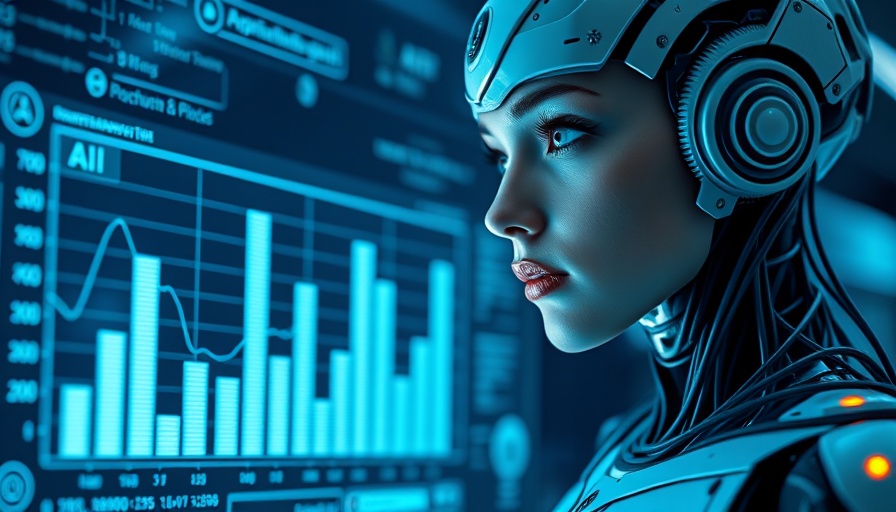
The Evolution of AI: From Simple Rules to Intelligent Agents
Artificial Intelligence (AI) has undergone a remarkable transformation since its inception. The journey began not with complex algorithms or deep learning frameworks, but surprisingly with rules-based systems that seem almost archaic by today’s standards. Understanding the stages of AI's evolution is crucial for R&D directors, tech investors, and innovation executives who are looking to grasp the significance of AI in their fields. Let's explore each stage of AI's growth and its implications for the future.
In 'The 7 Stages of AI Evolution', the discussion dives into the journey of AI from its inception to its current advanced state, exploring key insights that sparked deeper analysis on our end.
Stage One: The Dawn of Rules-Based Systems
In the 1950s and 60s, AI was still a nascent concept, largely defined by simple coding rules. Programs like Eliza, created by Joseph Weizenbaum, simulated psychotherapeutic conversations by following straightforward conditional commands. However, while Eliza gave the illusion of understanding, it lacked any real emotional intelligence. This would be a recurring theme in AI's development—machines that mimicked human behavior without truly grasping the underlying logic.
Stage Two: The Shift to Machine Learning
The 1990s marked a significant turn in AI's evolution with the advent of machine learning. Instead of manually coding every rule, researchers began to empower computers to learn from vast datasets. This transition laid the foundation for advancements like spam filters and recommendation engines, exemplified by Amazon’s predictive features. At this stage, adaptability became a crucial characteristic of AI systems as they learned from data rather than relying solely on programmed instructions.
Stage Three: The Deep Learning Revolution
Fast forward to 2012, where deep learning sparked a revolution in AI capabilities. Leveraging deep neural networks, machines began to analyze data with unprecedented accuracy. The breakthrough performance in image classification at the ImageNet competition illustrated the potential of AI to understand complex patterns, a feature that continued to grow with subsequent developments in speech recognition and translation technologies. However, these systems remained narrowly focused, excelling in specific tasks without the capacity for generalization.
Stage Four: The Rise of Generative AI
The 2020s ushered in generative AI, which allowed for the creation of content across various modalities—text, images, and eventually video. Foundation models like GPT-3 exemplified this shift by seamlessly handling diverse tasks from writing to coding. Generative AI began infiltrating everyday tools, transforming how people interact with technology. Despite its versatility, these models were not without flaws; they often suffered from inaccuracies or misinterpretations due to their lack of genuine understanding.
Stage Five: Autonomous Agents Taking Action
As we entered 2023, the focus began to shift toward autonomous agents capable of taking initiative. These systems distinguished themselves by planning, deciding, and executing tasks with minimal human intervention. Developments like AutoGPT and Baby AGI demonstrate that AI could not only assist but could also work independently, raising essential questions about accountability and ethical considerations that will shape the future of AI applications.
Looking Ahead: AGI and ASI on the Horizon
We stand on the cusp of two monumental stages: Artificial General Intelligence (AGI) and Artificial Super Intelligence (ASI). AGI represents a potential future where machines can perform a wide range of intellectual tasks at human-like capacity. ASI, on the other hand, could vastly surpass human intelligence, unlocking new realms of possibility that present both tremendous opportunities and risks. As stakeholders in innovation, it's crucial that R&D directors and tech investors remain aware of these developments and participate in shaping governance frameworks around AI management.
The progression from simple rules-based systems to sophisticated generative AI and ultimately autonomous agents showcases not just technological advancements, but a paradigm shift in how we interact with machines. As we look to the future, the question is not if AI will continue to evolve, but in what direction this evolution will lead us. How will we harness this technology responsibly and innovatively?
To navigate this rapidly evolving landscape, R&D leaders must stay informed and engaged with trends in AI. By investing in understanding the evolution of artificial intelligence, you can better position your organization for success in this transformative era. Connect with other professionals and share insights to foster a collaborative approach to innovation and responsible AI adoption.
 Add Row
Add Row  Add
Add 




Write A Comment